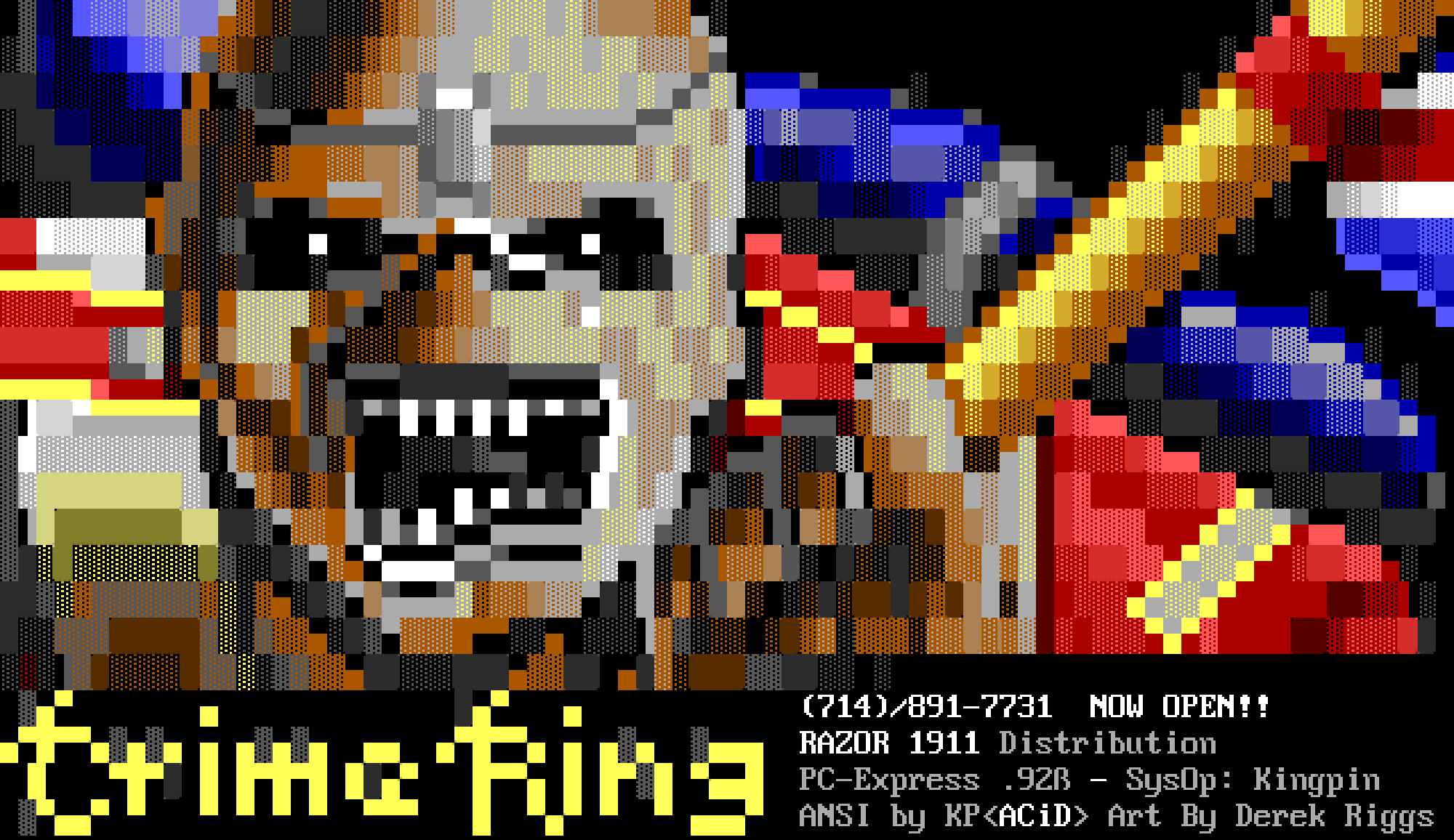The Lost Art of Warez

Credit to Author: DJ Pangburn| Date: Wed, 31 Jul 2019 14:22:45 +0000
Early internet users communicated with each other via Bulletin Board Systems, or BBS. Popular in the 1980s and early 1990s, these digital hubs allowed users to dial-up on a modem and chat on public message boards or through private chats, play text-based games, and even transfer files, from computer art to cracked software.
Pirated software, known as “warez,” was accompanied by ANSI art—a form of flashy hacker graffiti that credited the software crackers responsible for providing the illicit files. Eventually, ANSI art became its own subculture, with computer artists competing to develop new fonts and imagery in all its 8-bit glory.
A new documentary, The Art of Warez, directed by artist and filmmaker Oliver Payne in collaboration with one-time ANSI artist Kevin Bouton-Scott, dives into this world of warez and ANSI art. Payne told Motherboard that he met Bouton-Scott while teaching a course on video games at ArtCenter in Pasadena, California. The former ANSI artist schooled Payne on warez and ANSI subculture.
“Whilst graffiti exists illegally on private and public property, ANSI originally existed on (and to take credit for) illegally pirated software,” Payne said. “As they are criminal activities, both require anonymity and the use of a tag name to achieve notoriety within the scene. The best artists create fresh fonts using crazy color combinations and go hard to make as many dope ANSIs as they can. It’s totally hacker graffiti and the folk art movement of the proto cyber crime scene.”
Bouton-Scott said that ANSI art still feels mysterious to him after all these years. A graffiti artist as a kid, his transition into the ANSI scene felt completely natural to him.
“We were all completely obsessed with this stuff, going to enormous lengths to make the artwork and get the art packs together, trying to get good reviews in the electronic magazines that would write about all the latest work,” Bouton Scott said.
Payne thinks it’s remarkable that something so cool could remain virtually unknown. Bouton-Scott noted that many ANSI artists, who were also into coding and making VGA graphics and demos, later became graphic designers and likely influenced the look of the early web.
“As youth subcultures go, this might be the best one,” Payne said. “It combines so many wonderful things—hacking, video games, graffiti, freedom of information, fantasy art, mecha anime, anarchist literature, comic book monsters, [phone] phreaking.”
Bouton-Scott said the digital archivist Jason Scott, who works for the Internet Archive, teamed up with RaD MaN, founder of the ANSI group ACiD, to create a database of the art packs that still existed in the early 2000s. They are now available for download on Scott’s website, textfiles.com.
For Bouton-Scott, the ANSI scene has no contemporary parallel. But if there were one, he believes it would be comprised of teenagers, as social media for “creative adults” is dominated by entrepreneurialism, branding, and self-commodification.
“The ANSI scene was quite the opposite of this,” said Bouton-Scott. “It was a self-contained labor of love, pro-crime, anti-copyright, facilitating the very real need of free-software for young computer users.”
The Art of Warez, produced by safecrackers x somesuch, premieres online today (July 31) at SafeCrackers.
This article originally appeared on VICE US.